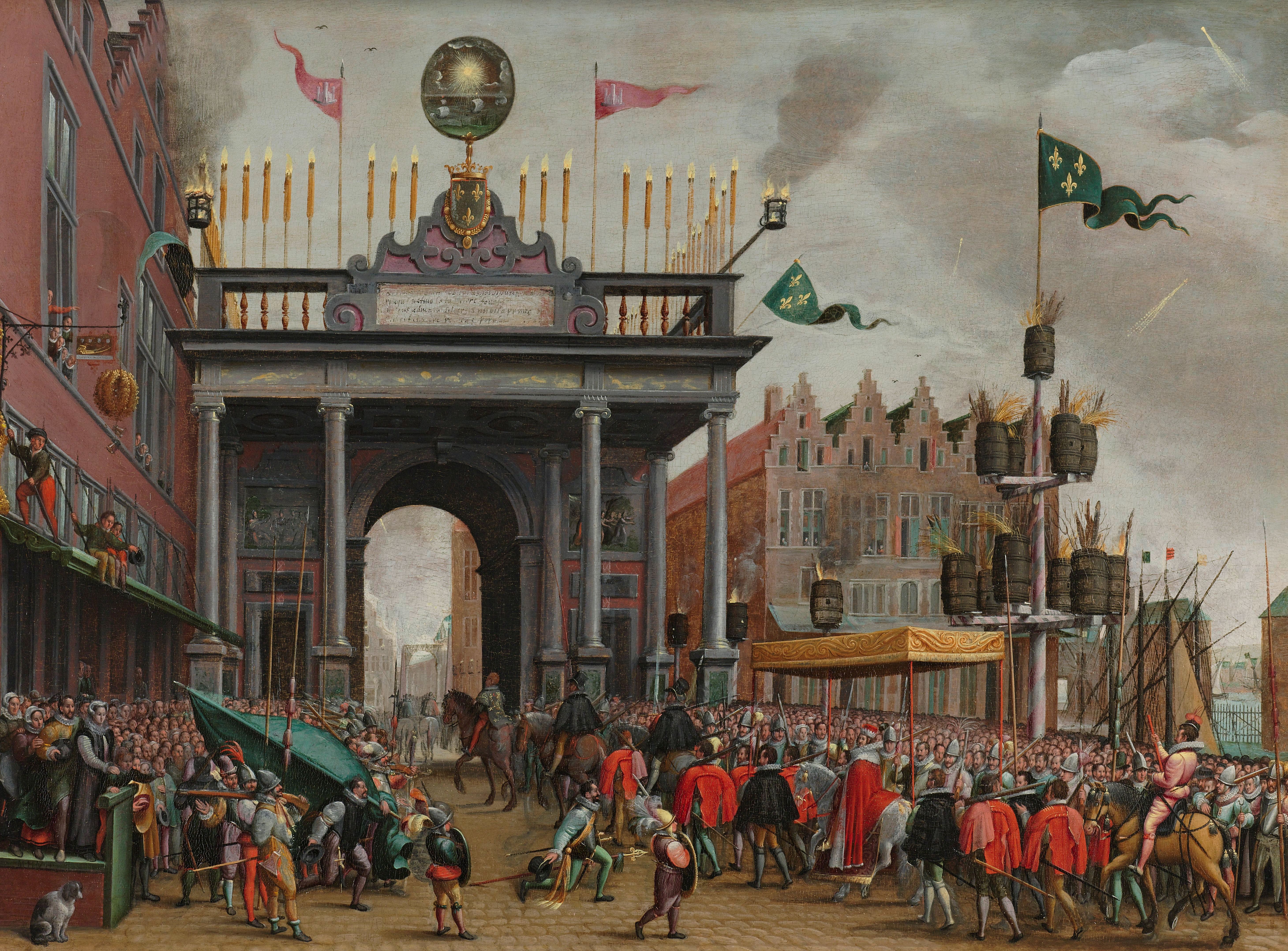
385 years ago, on 17 April 1635, the Joyous Entry of Cardinal-Infant Ferdinand of Spain into Antwerp took place. These ephemeral, spectacular, and artistically ingenious events – which in 1635 had been designed by Peter Paul Rubens – shaped and transformed the early modern cities of the Spanish Netherlands.
The online conference 'Step by step: Visualizing and asserting power in the Netherlands' (10 and 11 December) brings together the leading scholars of this field of art and ritual history whose contributions have made it possible to gain a deeper understanding of the early modern festivities held in the Netherlands to assert and negotiate power between the ruler and the ruled. Together with colleagues and specialists from adjacent disciplines, the organizers aim to discuss the challenges and opportunities of studying such significant moments in history.
Due to the dynamic situation of the Covid-19-pandemic, the two-day conference will take place in a digital format. Please register by sending an email to sabrina.lind@UGent.be and ivo.raband@uni-hamburg.de to receive further information and access to the event.
Programme
Thursday 10 December - Zoom
Time zone: CET/UTC+1 (Brussels)
15.30 | Welcome by Véronique Van de Kerckhof (Rubenianum) and the organizers Sabrina Lind (Ghent University (FWO)/University of Verona/Rubenianum) and Ivo Raband (University of Hamburg)
15.40 | Short Introduction of the Session by Ivo Raband (University of Hamburg)
Session 1
Art and Power: Joyous Entries between Politics and Aesthetics
Chair: Bert Watteeuw (Rubenianum)
15.50 | Margaret McGowan (University of Sussex), The Quest for Peace in Princely Entries
16.30 | Tamar Cholcman (Tel Aviv University), Emblematic Crosswords: The Spectator as Player in Joyous Entries
17.10 - 17.30 | Short Break
17.30 | Alexander R. Dencher (Leiden University/Rijksmuseum), Joyous Entry or Roman Triumph? Art and Ambiguity in the Entry of Willem III of Orange, King of England, into The Hague in 1691
18.10 | Joaneath Spicer (The Walters Art Museum, Baltimore), The Float Celebrating Archduchess Isabella’s Support for the Arts in the Brussels Procession of 31 May 1615
18.50 | End of day 1 and goodbye from the organizers
Friday 11 December - Zoom
15.30 | Short Introduction of the Session by Sabrina Lind (Ghent University (FWO)/University of Verona/Rubenianum)
Session 2
Multimedia and Performance: Joyous Entries and the Need for Interdisciplinarity
Chair: Samuel Mareel (Ghent University/Museum Hof van Busleyden)
15.40 | Stijn Bussels (Leiden University), Markers of Liminality: Tableaux Vivants in the Joyous Entries of the Low Countries
16.20 | Margit Thøfner (University of East Anglia), Thinking Through Music: Joyous Entry Soundscapes
17.00 - 17.20 | Short Break
17.20 | Anne-Laure Van Bruaene (Ghent University), Tradition and Rebellion: Entry Ceremonies in Calvinist Ghent (1577–1584)
18.00 | Antien Knaap (Museum of Fine Arts, Boston), Multimediality and Emblematics in Rubens’s Pompa Decorations and Frans Francken’s Allegory of the Abdication of Charles V
18.40 | End of day 2 and goodbye from the organizers
More information
Thursday 10 December 2020 - Friday 11 December 2020 from 15:30 to 18:50 (ZOOM)
Please register for the conference by sending an email to sabrina.lind@UGent.be and ivo.raband@uni-hamburg.de to receive further information and access to the event.
Participation is free of charge.
The event is organized by the Ghent University, the University of Hamburg and the Rubenianum and made possible through the generous support of the City of Antwerp, the Flemish Government, Ghent University, and the 'Hamburgische Wissenschaftliche Stiftung' in Hamburg.
Image: Blijde inkomste van de hertog van Anjou in Antwerpen op 19 februari 1582, Monogrammist MHVH, 1582 - 1600, Collectie Rijksmuseum
